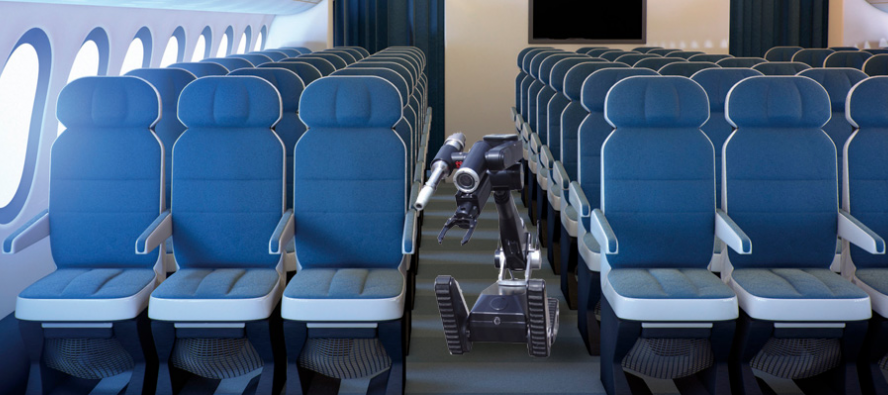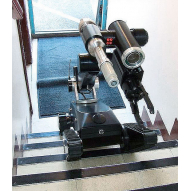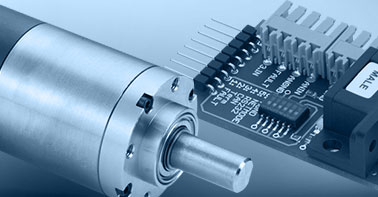- info@ems-ltd.com
- 0118 9817391
Home > Sectors > Automation & Robotics > Detect, secure, defuse
Micromotors for safety applications

The timely tracking down and disarming of bombs, IEDs and other dangerous munitions is most definitely a job for the professionals. Prior reconnaissance — to avoid calling in the specialists unnecessarily and to ensure a confirmed threat is handled safely — is an essential element of this process. In this scenario, remotely operated devices can drastically reduce the risk to the professionals involved in such activities, with high-precision micromotors replacing manpower to undertake the necessary hazardous operations at the scene.
AB Precision (Poole) Ltd. has been supplying the British Ministry of Defence (MoD) since the mid-1960s. To respond to the currently heightened risks in tracing and defusing explosive devices, the experts from Dorset developed the latest generation of their Guardian MROV (Miniature Remotely Operated Vehicles). The modular miniature vehicle is designed to carry additional equipment as required. Universal deployment capability also means that it must cope with any terrain.
Compact design in demand
Equally important is the compact design. This will ensure that it can be manoeuvred in narrow space such as trains, aircrafts or underground rail carriages. With a view to accommodating as many different functions as possible in a slimline design, including a powerful four-wheel-drive transmission, AB Precision’s security experts collaborated with micromotor specialist FAULHABER. In the basic Guardian module, 15 different micro motors accurately execute the control commands. The entire procedure is managed from a control station in a carrying case. A 17" LCD monitor shows the images captured by the cameras, while a 10.5" touch screen with soft buttons and 3D imaging of the vehicle offers intuitive control of the device and any additional modules installed. The “command centre” is rounded off by two joysticks for the drive and manipulator arm.
As reconnaissance is often performed in confined spaces, a compact design is essential. The dimensions of the device 417 mm (tracks), maximum length 1280 mm (extended) and height 504 mm are designed to facilitate navigation in narrow spaces. In contrast, the reconnaissance radius must be as large as possible.
Therefore, a telescopic arm extends the reach of the pan and tilt head up to 2.10 m. At the same time, the head can also be lowered so that it can inspect vehicle underbodies. A low centre of gravity and sturdy caterpillar tracks provide a stable base for sharp, shudder-free images as well as accurate manipulation using the cantilever head. Depending on the terrain involved, the chassis can also be fitted with wheels, allowing it to move faster on solid ground and enhance mobility.
High flexibility
The complete vehicle can be quickly assembled at a safe distance from readily portable modules. This makes it easier to transport and allows the experts to deploy the right tool for each individual situation by choosing a particular module. Apart from the four on-board cameras providing colour images, there are numerous other modules available such as various hardware devices, for example, lock-pick gun, X-ray unit, water jet, to name a few. Additional equipment can be transported in an optional trailer.
Customised micro motor solutions
The drives used in this system are just as diverse as the range of applications. However, all of them must meet certain general requirements such as absolute reliability, compact design, high performance combined with high-precision handling, and the greatest degree of efficiency for long battery life. In a nutshell, the product philosophies of the Guardian and the Faulhaber drive motors are very similar. Both rely on a modular product to ensure the widest possible range of applications. This similarity is also reflected in the deployment of the fifteen drives. Motors and gearheads are selected depending on the task in hand and combined to meet the required performance.
For example, each of the four drive modules is powered by a 38 mm diameter motor with matching diameter planetary gear. With over 200 W and around 150 mm at the motor shaft, the combined motor output of one metric HP is more than sufficient to move the vehicle and its equipment through terrain.
Two structurally identical motors with different reduction ratios are also responsible for raising and lowering the telescopic arm. The wide range of gear ratios allows the ideal output torque and speed to be selected for both operations. Smaller 32 mm motors with an output of around 80 W extend and retract the telescopic arm. To keep the weight of the head low, light 26 mm diameter, 44 W drives perform the ‘turn and tilt’ function. The camera and optional weapons, on the other hand, are actuated by two identical drives 23 mm in diameter and with around 20 W output. Depending on the function required, the manipulator works with a 23 mm and 26 mm drive.
All micromotors come in rugged DC brushed design and are therefore capable of starting even at very low voltages. The comparatively simple yet robust drive control system using pulse-width modulation is also ideal for this application.
EMS can provide the electronic drive system solution to meet the demands of any application. To learn more drive systems from EMS, get in touch with a member of the team today.










